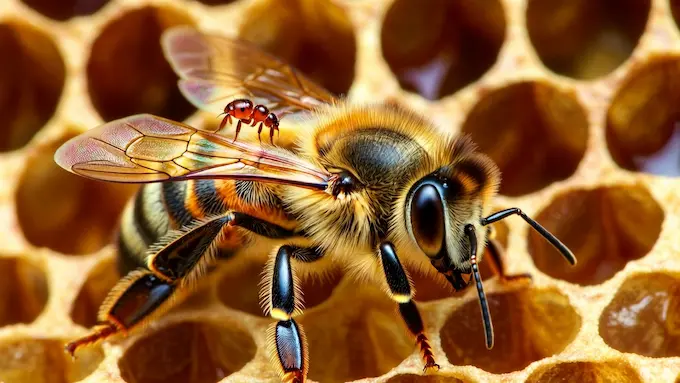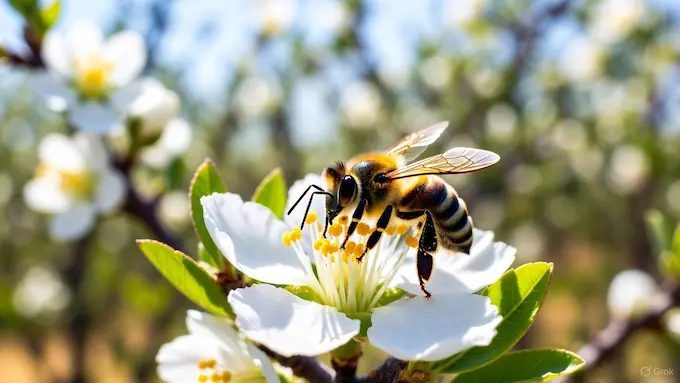Table of Contents
Beekeepers are in a crisis. Commercial colonies are dying at an alarming rate in some seasons, over 60% are lost threatening the pollination of essential crops like almonds, berries, and coffee.Beewise BeeHome is revolutionizing beekeeping with AI-powered robotics that monitors bee colonies 24/7, automatically treats threats, and reduces mortality by 80% while eliminating 90% of manual labor—all for a predictable monthly fee.
This collapse isn’t just an ecological tragedy; it’s an economic threat to global agriculture.
Now, one AgriTech company, Beewise, believes it has the solution. Its answer isn’t a new chemical or bee-breeding program. It’s an AI-powered, 11-foot robotic hive called the “Beewise BeeHome Robotic Hive.”
Key Takeaways
- The Product: BeeHome by Beewise is a robotic beehive that uses AI, sensors, and automation to monitor bee colonies 24/7.
- The Problem it Solves: It automatically treats parasites (like Varroa mites) using heat, manages temperature, and feeds bees, aiming to stop colony collapse before it starts.
- The Result: Beewise claims BeeHome can cut colony losses by 80% and significantly boost pollination yield, stabilizing the food supply.
- The Scale: This is not a small project. Beewise raised $50M in June 2025 (Series D), bringing its total funding to nearly $170M to scale this solution.
Why Bees Matter ?

About 75% of global food crop types almonds, berries, melons, coffee, and even cacao—depend on pollinators like bees. If bees crash, we literally lose yield and quality in those crops. One out of every three bites of food you eat is thanks to pollination.
But bees are under extreme pressure:
- Varroa Mites: These parasitic mites are the primary enemy, spreading viruses and disease.
- Pesticide Exposure: Chemicals in the field weaken colony immune systems.
- Climate Stress: Heat waves and unstable weather disrupt the hive.
- Habitat Loss: Monoculture farming reduces the diversity of food available to bees.
Beekeepers in the U.S. and Europe have reported losing more than half their colonies in a single season. This is not just “saving the cute bees.” This is about protecting global food security and stabilizing farm economics.
What Is BeeHome?
BeeHome is a smart, climate-controlled “apartment building for bees,” managed by robots. It’s an 11-foot, solar-powered unit that can house up to 24 separate colonies.

Think of it as an active, 24/7 intensive care unit for bees, unlike a traditional wooden hive, which is a passive box invented over 150 years ago.
The system uses a combination of hardware and software to act as a robotic beekeeper, performing tasks that normally require a human to do by hand.
| Feature | Benefit (Why It Matters) |
|---|---|
| AI & Computer Vision | Monitors bee health, counts mites, and detects queen problems 24/7. |
| Robotic Arm | Performs physical tasks like moving frames or applying treatments without a human. |
| Autonomous Climate Control | Protects the colony from extreme heat waves or cold snaps, reducing stress. |
| Autonomous Feeding | Provides food and supplements *before* the colony starves, not after. |
| Thermal Mite Treatment | Kills Varroa mites using controlled heat, avoiding pesticides inside the hive. |
| Remote Dashboard | Lets the beekeeper or farmer see hive status and alerts from a phone or computer. |
In plain language: BeeHome is a robot beekeeper in a box.
How BeeHome Tries to “Stop the Collapse Before It Starts”
Traditional beekeeping is reactive. A beekeeper drives to the orchard, opens the hive, inspects it by hand, and hopes they aren’t already too late to fix a problem.
The Future of Beekeeping with Beewise BeeHome Robotic Hive
BeeHome is proactive.
- It watches constantly.
2. It detects stress signatures early (mites, overheating, low food, queen problems).
3. It immediately corrects the problem or alerts the human.
The most critical feature is its Varroa mite treatment. Instead of using chemicals, the BeeHome’s robotic arm can move a frame of bees into a controlled heat chamber. This kills the mites (which die at a lower temperature) without harming the bees.
Beewise reports that this continuous monitoring plus instant intervention provides clear, measurable results.
| Metric | Traditional Beekeeping (Wooden Hive) | BeeHome by Beewise (Reported) |
|---|---|---|
| Annual Colony Loss | 40% – 60%+ | ~70-80% reduction in loss |
| Yield (Pollination/Honey) | Baseline | ~50% increase |
| Required Labor | High (manual, on-site) | ~90% reduction |
| Hive Monitoring | Reactive (periodic manual checks) | Proactive (24/7 AI monitoring) |
| Varroa Mite Treatment | Manual, often chemical-based | Automatic, non-chemical (heat) |
This last part the 90% labor savings is huge. Commercial beekeeping is extremely manual, and skilled labor is scarce. Automating inspections and mite treatment means one human can manage far more colonies
Why Farmers (and Almond Growers) Care

If you grow almonds, blueberries, or melons, you don’t just “rent bees.” You rent pollination performance.
From the grower’s point of view:
- A stronger colony means better fruit set.
- Better fruit set means more saleable product per acre.
- More reliable pollination means less risk in a year with chaotic weather.
Beewise positions BeeHome as “Pollination-as-a-Service.” Farmers get stronger, healthier colonies actively maintained on their land, providing higher consistency and, ultimately, a better harvest.
Funding and Scale (This is Not a Hobby Project)
Beewise is not a small startup. In June 2025, the company announced a $50 million Series D funding round, bringing its total capital raised to nearly $170 million.
Investors are treating pollinator stability like they treat water tech or precision irrigation: as essential climate infrastructure. If bees fail at scale, entire food supply chains become unstable and food prices rise. This funding is a bet that AI and robotics are the key to securing that supply chain.
Limitations / Reality Check
To be balanced, BeeHome has limitations:
- It’s Still Hardware: Hardware in a field breaks, needs cleaning, needs power, and needs to be moved.
- Adoption Friction: Not every grower will be quick to accept robots in their orchards.
- It Doesn’t Solve Everything: BeeHome doesn’t solve habitat loss. We still need to protect native bees, butterflies, and other wild pollinators.
- It’s for Commercial Ag: The core pitch is that commercial pollination (like for almonds) is already an industrial process. BeeHome just makes that industrial process less deadly for the bees.
FAQ
Q1. What is BeeHome?
BeeHome is an autonomous, climate-controlled beehive made by Beewise. It uses AI, sensors, and robotics to monitor colonies, feed bees, kill mites with heat instead of chemicals, and alert beekeepers in real time.
Q2. Why do bees even need robots?
Bee colonies are collapsing due to parasites (especially Varroa mites), pesticides, and climate stress. Commercial beekeepers can’t babysit every hive 24/7. BeeHome provides continuous monitoring and instant intervention.
Q3. Does BeeHome really help crop yield?
Beewise reports BeeHome cuts colony loss by around 70–80% and can increase yields by ~50% because stronger, healthier colonies pollinate more flowers.
Q4. Is this only for honey production or also for pollination services?
Both. While it supports honey production, the main business is reliable pollination for high-value crops like almonds and berries. Growers pay for this service because it directly impacts their harvest.
Q5. How does BeeHome kill mites without chemicals?
It uses a controlled heat chamber. Varroa mites die at temperatures that bees can tolerate briefly, so the system can reduce the mite load with no pesticide spray.


